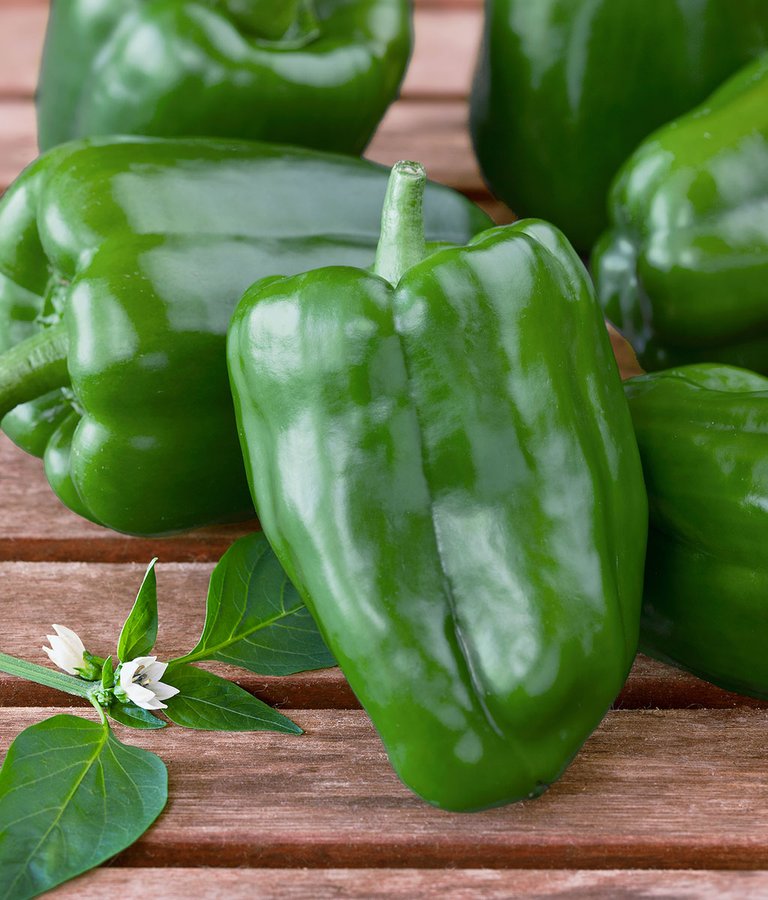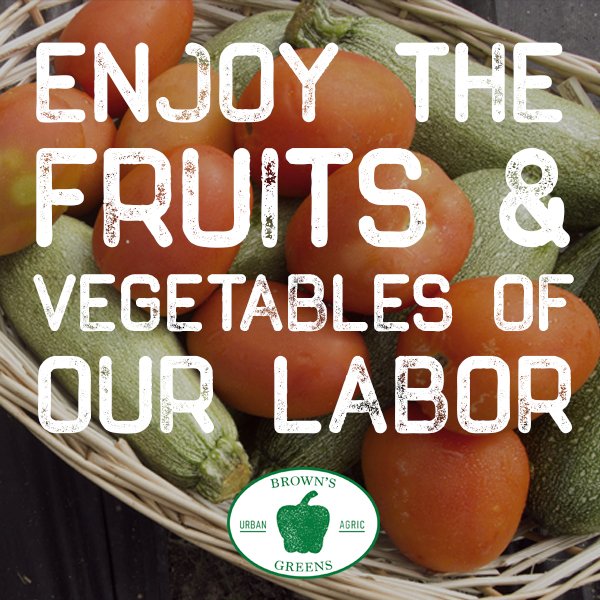
Hey folks! If you have read my passed gardening articles you know my advice is for the beginner food gardener. I will continue in that vein, but stay tuned in because my advice will gradually become more focused and will aid anyone from a beginner to an expert. Today I’ll give some tips for growing some deliciously sweet bell peppers and tomatoes.
Tomatoes and bell peppers have a lot of the same needs and they can co-exist quite well, which is why I am tackling them in tandem. In my last Just Grow Food article, I touched on the three main factors to consider while preparing your garden site. I will take you through each of these three factors in relation to tomatoes and peppers today, and cue you in on some do’s and don’ts.
WATER: Tomatoes and peppers like a lot of water. Unlike some vegetables and most herbs, they do better if they don’t dry out completely between waterings, so you have to really stay on top of keeping these guys wet. If they go a long time between waterings, it can cause problems, like tomatoes cracking while on the vine, and peppers plants having weak immune systems and the produce developing rot spots. Drip systems are ideal for these vegetables (drip is really ideal for everything) but it can be expensive to install, so if that is not an option, building “berms” and hand watering is a good alternative. I have a greenhouse of tomatoes and peppers, shown in its early stages in the pictures below. You can see the berms I created around my plants, essentially little walls to retain and focus the water right to the plant’s roots. For perennials, shrubs, and trees, berms are not ideal because they don’t encourage roots to spread any further than the berm walls, but for annual plants, they work great because the roots systems only have one year of growth. Make your dirt berms 3 or 4 inches high and at least 1 or 2 feet in diameter. Any less may stunt root growth, even for annuals. Frequency of watering depends on maturity of plant, soil make-up, and heat of the sun. I fill the berms in my greenhouse everyday while the plants are young, and then switch to filling the berms twice when I water, and watering every two to three days as the plants increase in size and begin to flower.


SUN: These guys like as much sun as humanly possible. If you are buying started plants from a nursery, make sure to pick ones that have had enough sun. You can tell this by looking at the thickness of stems and distance between branch “nodes” (where a limb shoots out from the main stock). A tomato or pepper plant that has sufficient sunlight will have dark green, thick, compact stems. A plant that struggles for sun will be taller and lankier, with more distance between branch nodes. The distance between nodes shows whether a plant is stretching and elongating to try to find sun, or if it is growing properly and stoutly because it doesn’t have to search for extra sun.
SOIL: This factor is the fun one. Crafting your soil for delicious food growth can be vastly complicated, but there are a few things to start with when it comes to tomatoes and peppers specifically. Although these plants don’t like to dry out completely, they still need well drained soil. “Blossom end rot” (when the tips of tomatoes turn black) can develop if a plant’s soil is too wet and won’t drain quickly, as well as other issues (blossom end rot can also be amended by adding calcium to your soil, there are various kinds of garden calcium, I have solved the problem by mixing calcium nitrate into the soil when planting). There are many ways to amend your soil to make some delicious fruits, but as far as turning decent tomatoes and peppers into irresistible comfort food, I suggest adding leaf compost and garden dry molasses to your soil. I did this just this year and noticed an INCREDIBLE change in taste. I will attempt to explain why:
Decomposing organic matter in your garden soil seems to affect the taste of your produce based on what it is made up of and what kind of microbial life is breaking it down. Soil has two basic forms of microbial life that affect plants: fungi and bacteria. Fungi primarily breaks down organic material high in carbon (bark and woody material), and bacteria breaks down materials high in nitrogen (leaves, grass clippings, green manure). I have done a lot of research in this area and to be honest, I could not find a study with a definitive answer that one of these affects the taste of produce grown from its soil, but I cannot deny that I believe there is a huge effect. There is, on the other hand, a lot of evidence that vegetables grow and produce much better with a soil that is high in bacteria rather than fungus. In years passed, I used compost in my greenhouse that had a fair amount of woody material, and thus, fungus. This year, I mixed a high amount of leafy compost and dry molasses into the soil, thus attracting bacteria, and had a vastly sweeter, tastier crop. Garden dry molasses is a sugar by-product and is mixed with roughage products, all of which feed bacteria very efficiently. SO, the leafier, lighter, greener the soil amendment, the better for tomatoes and peppers.

I know that’s a lot of info! To summarize, get your tomatoes and bell peppers in some heavy sun, water them deeply, and amend their soil with leafy green compost/manure. See what happens when Spring rolls around, and just grow some food!

Great post and some nice information again.
I like what you shared about the effect of different kinds of organic material on the soil and the plants grown in it.
Gotta love some greenhouse work!
it does look really fresh!!!
Con respecto al sistema de goteo puedes abrir pequeños huecos en las mangueras y asi tendras un sistema economico, cada cierto tiempo abres y cierras el agua para ahorrar tambien el agua, en caso. Aqui acostumbramos tambien abono de cortezas de los vegetales o frutas en la tierra, echar cal en las raices de las plantas para protegerlas de las hormigas. Tiempo atras sembramos en bandejas sobre agua: cosa que no fue muy sencilla y perdiamos las flores y no obteniamos el fruto, pero se nos dieron muy bien varios tipos de albahaca y lechugas pero su verde era muy claro; tambien usabamos productos para el ph, vinagre en el agua o para limpiar sus hojas de algunos virus, vitaminas, etc. Total perdimos algunas plantas porque su raices se tornaron babosas. Con el tiempo vinieron unos especialistas y mediante ellos supimos que si el agua no tendria una fuente, no podrian partirse las moleculas del agua lo que permitiria liberar las vitaminas y nutrirse como debian. Bueno, por decirte algo :) Saludos
With respect to the drip system you can open small holes in the hoses and so will have an economic system , from time to time open and close the water to save water too , just in case. Here also we got used fertilizer bark of vegetables or fruit on the ground, putting lime in the roots of plants to protect them from ants. Time you sow in trays back on water : which was not easy and we were losing we did not get flowers and fruit , but we were given very different types of basil and lettuce but the green was very clear ; We also used products pH, water or vinegar to clean their leaves some viruses , vitamins , etc. Total lost some plants because their roots became slugs . With time came a few specialists and through them knew that if the water would not have a source , could not break the water molecules which would free the vitamins and nourishment as debian. Well, to tell you something :)
This post has been linked to from another place on Steem.
Learn more about linkback bot v0.3
Upvote if you want the bot to continue posting linkbacks for your posts. Flag if otherwise. Built by @ontofractal